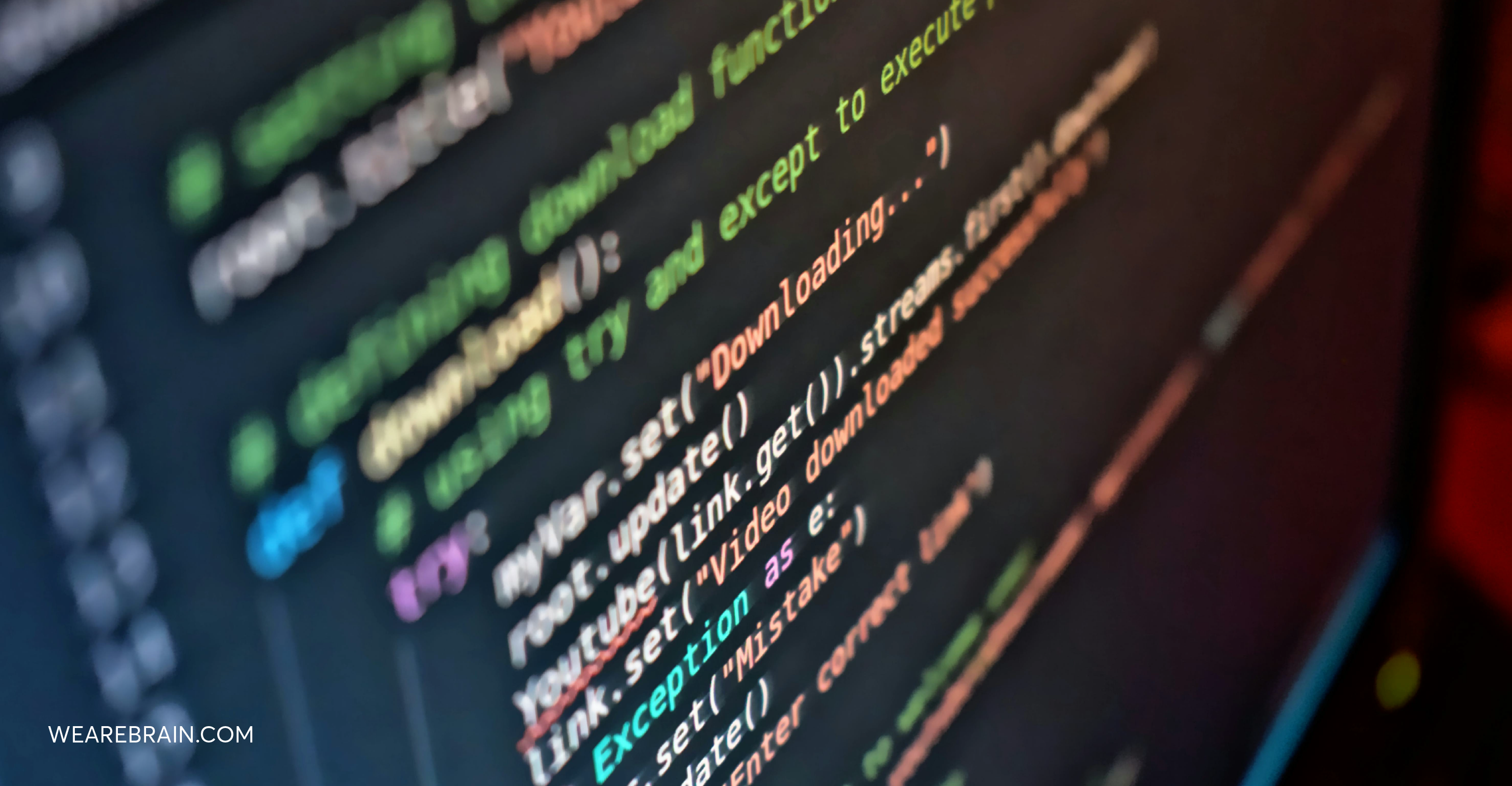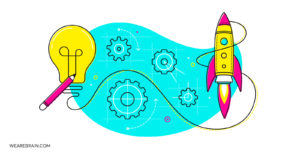The essential tech stack for AI startups in 2025

As we move deeper into 2025, the landscape for AI startups continues to evolve at breakneck speed. Whether you’re a seasoned entrepreneur or just beginning your journey into the world of artificial intelligence, choosing the right technology stack can make the difference between building a revolutionary product and getting lost in the crowd.
In this guide, we’ll explore the essential technologies that form the backbone of successful AI startups in 2025, from programming languages and frameworks to the increasingly critical Large Language Models (LLMs) that are reshaping how we approach natural language processing.
The foundation: Python remains king
Despite the constant evolution of programming languages, Python remains the undisputed champion for AI development in 2025. Its combination of readable syntax, extensive library ecosystem, and vibrant community support makes it the ideal choice for startups looking to move quickly from concept to deployment.
Python’s dominance isn’t merely a matter of preference—it’s a practical necessity. The language’s ecosystem has evolved alongside AI itself, offering seamless integration with virtually every tool and framework in the AI landscape.
Essential libraries for data manipulation and visualisation
Data is the lifeblood of any AI system, and how you manipulate, analyze, and visualize that data can dramatically impact your outcomes. In 2025, the fundamental libraries for these tasks remain largely unchanged from previous years, though they’ve evolved to handle larger datasets and more complex scenarios.
Startups need to become proficient with these tools early, as they form the foundation upon which more advanced AI capabilities are built. The ability to efficiently wrangle data, extract meaningful patterns, and communicate insights visually remains a competitive advantage in the AI startup ecosystem.
These core libraries continue to be the workhorses of data science:
- NumPy provides the foundation for numerical computing, with support for multi-dimensional arrays and matrices—essential for handling the large datasets that power AI applications.
- Pandas offers powerful data structures and analysis tools, making it easy to clean, transform, and analyze complex datasets.
- Matplotlib and Seaborn provide complementary visualisation capabilities, helping you understand data distributions and model performance through intuitive charts and graphs.
These tools remain staples in the AI startup toolkit, serving as the bridge between raw data and actionable insights.
Machine learning frameworks: from classic to cutting-edge
The machine learning landscape in 2025 continues to be characterized by a hybrid approach that combines traditional algorithms with deep learning techniques. While neural networks often capture headlines, classical machine learning methods remain incredibly valuable for many business applications, particularly when working with structured data or when interpretability is crucial.
AI startups should resist the temptation to immediately jump to deep learning for every problem—traditional machine learning often provides excellent results with lower computational costs and greater transparency. The current ecosystem offers a rich variety of tools ranging from beginner-friendly implementations to highly specialized frameworks optimized for specific use cases or performance characteristics.
Here are the standout options that every AI startup should consider:
- Scikit-Learn continues to excel with its user-friendly API and comprehensive selection of algorithms for classification, regression, clustering, and dimensionality reduction.
- XGBoost, LightGBM, and CatBoost offer advanced gradient boosting capabilities, often delivering superior performance for tabular data tasks compared to deep learning approaches.
When it comes to deep learning, two AI frameworks dominate the landscape:
- TensorFlow provides an end-to-end platform optimised for production deployment, with robust tools for model serving and edge deployment.
- PyTorch offers a more dynamic and intuitive interface, making it the preferred choice for research and rapid prototyping.
Most AI startups in 2025 leverage both frameworks depending on specific use cases and team expertise.
The rise of Large Language Models (LLMs)
Perhaps the most significant development in the AI startup landscape since 2023 has been the continued evolution of Large Language Models (LLMs). These powerful systems have fundamentally changed what’s possible in natural language processing, opening up new frontiers for businesses focused on text generation, understanding, and manipulation.
For startups looking to leverage LLMs, several options are available:
API-based solutions
- GPT-4.5 (OpenAI): Released in February 2025, this model features a 128,000 token context window, though its knowledge cutoff remains at October 2023.
- Claude 3.7 Sonnet (Anthropic): With its 200,000 token context window and knowledge updated to October 2024, this model offers excellent capabilities for processing lengthy documents.
- Grok-3 (xAI): Known for its real-time knowledge capabilities, making it valuable for applications requiring current information.
Open-source alternatives
- Llama 3.1 (Meta AI): This 405B parameter model released in mid-2024 offers impressive capabilities for startups looking to avoid API dependencies.
- DeepSeek R1 (DeepSeek): With both API and open-source access options, this 671B parameter model (with 37B active parameters) provides flexibility for diverse deployment scenarios.
Small language models
For startups with limited computational resources or specific efficiency requirements, smaller models like Microsoft’s Phi-3 (ranging from 3B to 14B parameters) offer a balance between performance and resource consumption.
The choice between these options depends on factors including:
- Performance requirements vs cost constraints
- Need for customisation and fine-tuning
- Data privacy considerations
- Specific task requirements (e.g., real-time knowledge, long document processing)
Specialised libraries for NLP and computer vision
While LLMs have revolutionized natural language processing, they don’t eliminate the need for specialized libraries that handle specific text processing tasks with efficiency and precision. Similarly, in computer vision, specialized frameworks provide optimized implementations of algorithms that form the building blocks of more complex visual AI systems.
These domain-specific libraries often serve as the connective tissue between raw data and advanced models, performing essential preprocessing, feature extraction, and post-processing operations. They’re particularly valuable when working with domain-specific data or when operating under resource constraints where full-scale LLMs or large vision models might be impractical.
AI startups focusing on these domains should be familiar with these specialized tools that often complement larger models:
For natural language processing:
- NLTK and SpaCy provide tools for text preprocessing, tokenisation, and linguistic feature extraction, complementing the capabilities of larger language models.
For computer vision applications:
- OpenCV remains essential for image processing and manipulation.
- PyTorch Vision offers pre-trained models and components for visual recognition tasks.
Deployment solutions: bringing models to life
The journey from a well-trained machine learning model to a product that delivers value to users is often underestimated by technical founders. Deployment isn’t merely an afterthought—it’s a critical phase that determines whether your AI innovation will succeed in real-world conditions. As AI capabilities have grown more sophisticated, so have the tools for deploying them at scale.
Modern deployment solutions need to handle challenges like model versioning, monitoring for drift, managing computational resources efficiently, and ensuring reliable performance under varying loads. They must also provide interfaces that make AI capabilities accessible to end-users, whether through APIs, web interfaces, or embedded experiences.
In 2025, several technologies have emerged as the go-to solutions for AI deployment:
- Flask provides a lightweight framework for creating RESTful APIs, suitable for simple model serving.
- FastAPI offers improved performance and automatic documentation, making it ideal for production-grade APIs.
- Streamlit enables rapid development of interactive applications, perfect for demonstrations and internal tools.
These technologies bridge the gap between model development and practical business applications, allowing startups to deliver value quickly.
Technology summary: your AI startup stack at a glance
The table below provides a comprehensive overview of the key technologies discussed in this article, organized by category with rationales for their inclusion and specific benefits for AI startups:
| Category | Technologies | Reason for selection | Usefulness for AI startups |
| Programming Language | Python | Most popular for AI development with extensive libraries and community support | Enables rapid prototyping and deployment, with seamless integration across the AI ecosystem |
| Data Manipulation | NumPy, Pandas | Fundamental for handling and analysing data efficiently | Facilitates essential data preprocessing, transformation, and feature engineering |
| Visualisation | Matplotlib, Seaborn | Comprehensive tools for creating insightful data visualisations | Helps understand data patterns, diagnose model performance, and communicate results effectively |
| Machine Learning | Scikit-Learn, XGBoost, LightGBM, CatBoost | Provides both accessible and advanced algorithms for different prediction tasks | Offers a range of algorithms for classification, regression, and clustering with different performance characteristics |
| Deep Learning | TensorFlow, PyTorch | Leading frameworks with complementary strengths in production and research | Essential for building neural networks for complex problems like image recognition and natural language processing |
| Large Language Models | Hugging Face Transformers, OpenAI API, Anthropic API, Llama 3.1 | Provide access to state-of-the-art language models | Enable sophisticated text generation, understanding, and manipulation for applications like chatbots and content creation |
| Specialised Libraries | NLTK, SpaCy (for NLP), OpenCV, PyTorch Vision (for computer vision) | Cover specific domain needs with optimized implementations | Essential for targeted preprocessing and feature extraction in text and image domains |
| Deployment | Flask, FastAPI, Streamlit | Facilitate deploying models as web services or interactive applications | Ensure AI models are accessible and usable in production environments |
Emerging trends shaping the AI startup landscape
Understanding the current landscape is crucial for startups looking to position themselves at the cutting edge without chasing every new development. The most successful AI startups in 2025 are those that can identify which emerging trends align with their core business objectives and selectively incorporate them into their technology stack.
Rather than attempting to adopt every new innovation, strategic founders focus on trends that offer tangible advantages for their specific use cases and customer needs. Here are several significant trends that are currently influencing technology choices for forward-thinking AI startups:
- Agentic AI systems that autonomously perform sequences of actions are gaining traction, sometimes leveraging tools like LangChain for orchestration.
- Multimodal AI systems that combine different types of data (text, images, audio) are becoming more accessible to startups, enabling new applications and user experiences.
- Small language models are increasingly viable alternatives to larger counterparts for specific use cases, offering better resource efficiency and deployment flexibility.
- Generative AI continues to expand beyond text to images, video, and code generation, driven by technologies like diffusion models.
Building your optimal stack
Assembling the right technology stack is a strategic decision that balances technical capabilities against business requirements. There’s no one-size-fits-all solution for AI startups—the optimal combination depends on your unique value proposition, target market, and operational constraints.
While it’s tempting to adopt the latest cutting-edge technologies, successful founders understand that technology choices should be guided by business objectives rather than technical novelty. The best tech stacks are those that enable you to deliver value quickly while providing room to scale and evolve as your startup grows.
When evaluating which technologies to include in your stack, consider these key factors that will influence your long-term success:
- Problem-solution fit: Choose technologies that align with your specific use case rather than following trends blindly.
- Team expertise: Leverage your team’s existing skills where possible to accelerate development.
- Scalability requirements: Consider how your technology choices will support growth over time.
- Budget constraints: Balance performance against cost, especially for API-based services.
- Time to market: Prioritise technologies that enable rapid iteration and deployment.
From technology to transformation: your roadmap to AI startup success
The ideal tech stack for AI startups in 2025 combines the stability of established tools like Python, NumPy, and Pandas with cutting-edge capabilities offered by modern deep learning frameworks and large language models. By thoughtfully selecting components that align with your specific business needs, you can build a foundation that enables innovation while remaining adaptable to the ever-changing AI landscape.
Remember that technology choices should ultimately serve your business goals, not the other way around. The most successful AI startups in 2025 will be those that leverage these powerful tools to solve real problems for customers, creating tangible value in an increasingly competitive market.
Ready to turn your AI idea into reality? Get in touch to discuss how we can help you build your next-generation AI solution.
Mario Grunitz
Working Machines
An executive’s guide to AI and Intelligent Automation. Working Machines takes a look at how the renewed vigour for the development of Artificial Intelligence and Intelligent Automation technology has begun to change how businesses operate.







